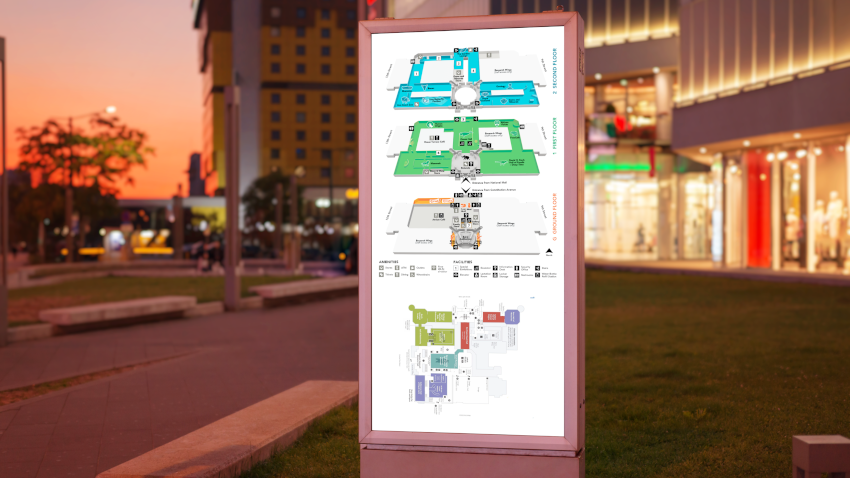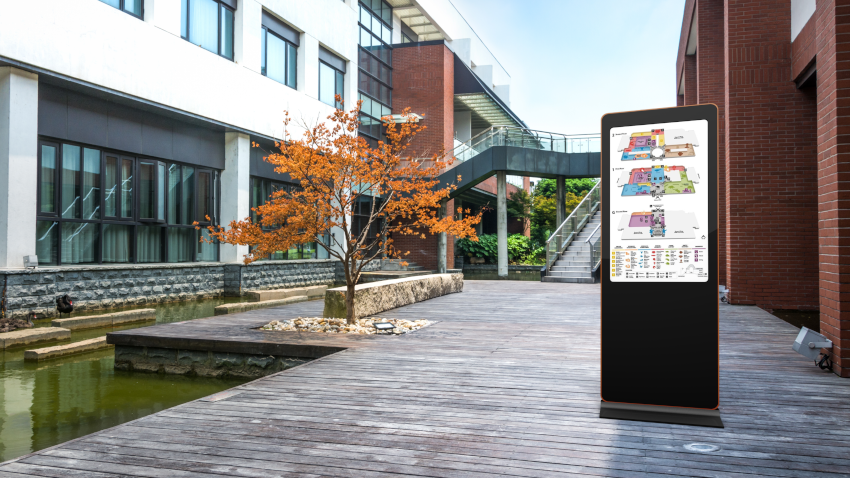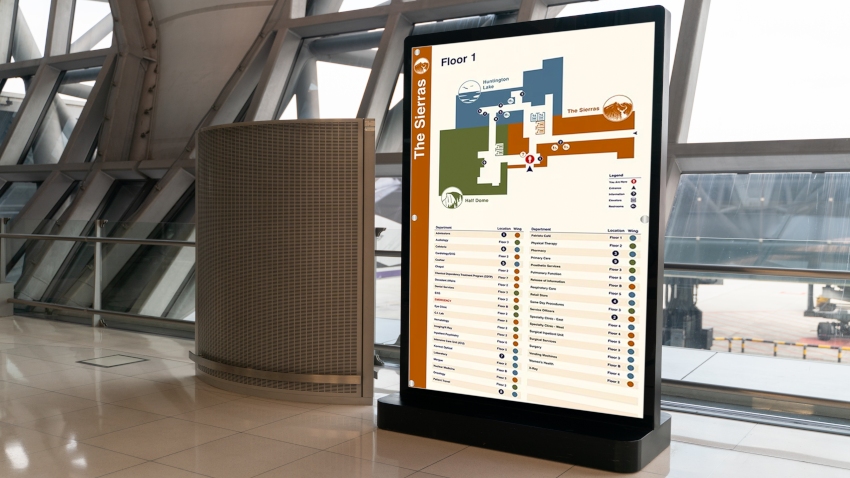5 Reasons Why Your City Needs Wayfinding Signage
Can you imagine walking around the city without knowing where you are going? This travel frustration is precisely why cities need signage systems for effective wayfinding. In today’s modern society, we rely heavily on GPS systems to navigate our surroundings. In fact, Americans use more than 900M GPS receivers. And while they provide us with accurate directions, they don’t always tell us where we should be heading.

Wayfinding signs are just what you may assume: directional signs that tell you where you are going and how to get there. You can find them at bus stops, train stations, airports, shopping malls, restaurants, hotels, museums, and parks. These signs guide you in the right direction by allowing you to identify landmarks and recognize places you’ve already been.
Adding wayfinding signs near busy intersections is vital because municipalities often overlook them and don’t deem them necessary. Besides, adding wayfinding signs to places frequently visited by tourists helps them navigate their way around the city.
Developing a Successful City Wayfinding System
Achieving your city’s wayfinding system is only possible by paying attention to how to make the spaces easier to navigate. A well-designed city wayfinding system in a non-intuitive streetscape and complex urban community should embed a graphically consistent design. At the very least, the wayfinding system should be:
- Directional
- Navigational
- Designed for orientation to better assist users at any point in their journey.
With a multi-modal wayfinding strategy, cities can better highlight the benefits above and help visitors and residents make smarter travel choices. However, city planners must extensively research foot and vehicular traffic patterns to achieve such a transformation. Besides, they must assess and evaluate behavior and routes. The information is crucial in determining where to position signage throughout the city for a remarkable change.
Other crucial factors to remember in putting up city wayfinding systems are:
- Understanding the structure of the municipality and evaluating the perceived barriers to movement
- Encouraging collaboration and input from community stakeholder groups like the tourism community, business associations, cultural institutions, signage consultants, and transit agencies
- Deploying strategic wayfinding elements informed by national and international best practices and guidelines for user-friendliness, legibility, and accessibility
- Implementing other system components like mobile technology and digital signage further improves the navigation experience for visitors and residents.
Here are five reasons your city needs wayfinding signage solutions:
1. Make Public Places Safe
Wayfinding signage should help people find their way quickly by identifying pedestrian areas and directing drivers to their lanes and parking spaces. Suppose you find yourself in an environment outside your comfort zone, like attending an interview in another city or starting university. In that case, you will understand the importance of wayfinding signage in helping ease unrest and safely guide you to your destination.
In a healthcare setting, wayfinding signage eases the anxiety of the medical experience. Such places use environmental graphics where one can easily follow a track guiding them to their location.
In public places, wayfinding signage helps with the flow of pedestrians and traffic, enhancing the safety of everyone. Public spaces may have pickpockets or cons looking for easy targets. As a way of guaranteeing safety for visitors and residents, your city needs to invest in wayfinding signage to prevent consequences of intentional misguiding by people looking to prey on visitors or residents who seem lost or unaware of how to get to their destination.
Wayfinding signage relies on extensive research to identify foot and vehicular traffic patterns to assess what an area needs and where to place the signs. So, using wayfinding signage in your city reduces travel frustrations and can increase return visits.
2. Provide Helpful Information to Tourists
Have you ever heard of cities that don’t need wayfinding signage because they already have maps or GPS devices? Such cities miss out on the importance of wayfinding signage in saving time and increasing safety. In addition, wayfinding signage can help you attract tourists.

In fact, after the pandemic, most destinations welcomed at least three times more tourist arrivals. So, once the visitors arrive, they need plenty of information to navigate your city without bothering strangers when asking for directions, especially if they cannot access a GPS device. As a result, you need to place wayfinding signage around the city strategically. Ensure the signs are visible from both sides of the street to help pedestrians, cyclists, and drivers driving in either direction see the signs seamlessly.
Wayfinding signage aims to answer two questions your visitors ask: ‘Where am I?’ and ‘Where am I going?’ Answering these questions fast and quickly makes your visitors confident and comfortable moving around your city. In fact, approximately 33.1% of people feel more confident walking or using their bicycles when and where there are wayfinding signs. In addition, it provides a sense of place and community, making visitors enjoy your city and may visit again.
3. Rebrand Your City
A wayfinding signage program is an excellent way for your city to rebrand and differentiate itself from other suburbs. Every city desires its visitors to enjoy its localized experience and increase its tax base by encouraging them to move in. Wayfinding signage design is a messaging solution that communicates the city’s character. Moreover, it adds a new feel, improving the city’s image. It is also a great way of raising awareness of the latest amenities it offers.
In addition, a wayfinding project for the city can help you unify its identity by being consistent with its character. That means your wayfinding design should be similar regardless of its placement. Also, the signs develop your city’s economic growth to help you benefit from the considerable traffic that passes through every day but never gets to experience your city’s beauty.
4. Unify a City’s Identity
Finding the right balance can be tricky when a city has multiple identities. That’s where wayfinding signage enhances consistency throughout the city’s character. Consider this example: The City of Davis in California needed to find a way to incorporate branding between the UC Davis Campus and the vibrant downtown area. They chose to unify their identities with an all-encompassing wayfinding program. Its design is such that it cohesively links the two areas under the proud banner of Aggie blue and gold.
The city’s directional signs in the downtown area were designed to enable users to navigate smoothly between the campus and the thriving downtown area. Markedly the digital wayfinding solutions feature clear text, modern detailing, and a signature bicycle wheel motif. The signs are an aesthetically pleasing addition to the visual landscape. Therefore, the wayfinding signs have helped announce the City of Davis as an active, youthful, and welcoming city full of pride for the resident university.
5. Promote a City’s Economic Growth
Interestingly, digital wayfinding signs are not only about the subjective “feel” of a place. In other words, they can contribute to tangible and measurable business development goals. As an example, many municipalities complain that vast amounts of traffic pass through the major highways and never get to experience or fund the smaller business districts along the way.
Following this realization, the City of San Leandro used strategic wayfinding signs to develop a solution. The City implemented a creative way to attract vehicular and pedestrian traffic into the downtown business district from the nearby AC and BART Transit stations.
Consequently, they installed gateway wayfinding signs to alert drivers about the attractions downtown and available packing spaces. On the other hand, directional and orientation signs helped pedestrians quickly locate shops and restaurants. With time, the City’s wayfinding system increased traffic to the downtown area and opened opportunities the local businesses to flourish.

San Leandro is an excellent example that a thoughtful population is good for cities. However, population and economic growth can only boom if municipalities create new traffic patterns based on state and federal roadways that guide traffic around the city, not through it. Wayfinding sign systems help direct relevant traffic to public services, retail areas, and other points of interest. Then, visitors can find their way back into the highway once their visit is complete.
How Would You Rate Your City’s Wayfinding Signage?
Is your city’s directional signage good enough to get around town without asking for directions from strangers or paying for a map? Or does it need improvement? Wayfinding signage provides information about local businesses, attractions, and other important places to brand and grow your city.
However, your digital signage positioning affects its impact on the city positively or negatively. So, consider strategic locations for your wayfinding signage for maximum impact. Also, consider your budget for the success of your wayfinding system as practical and cost-effective. Involve stakeholders in decision-making regarding initiatives and wayfinding strategies, like types of signs, graphic design, signage programs, and signage systems to improve the city’s image and wayfinding experience.


